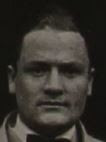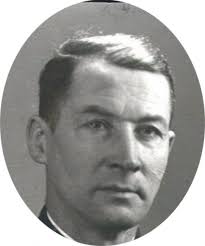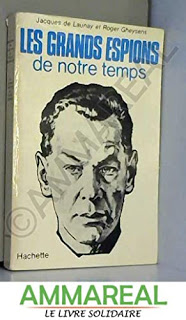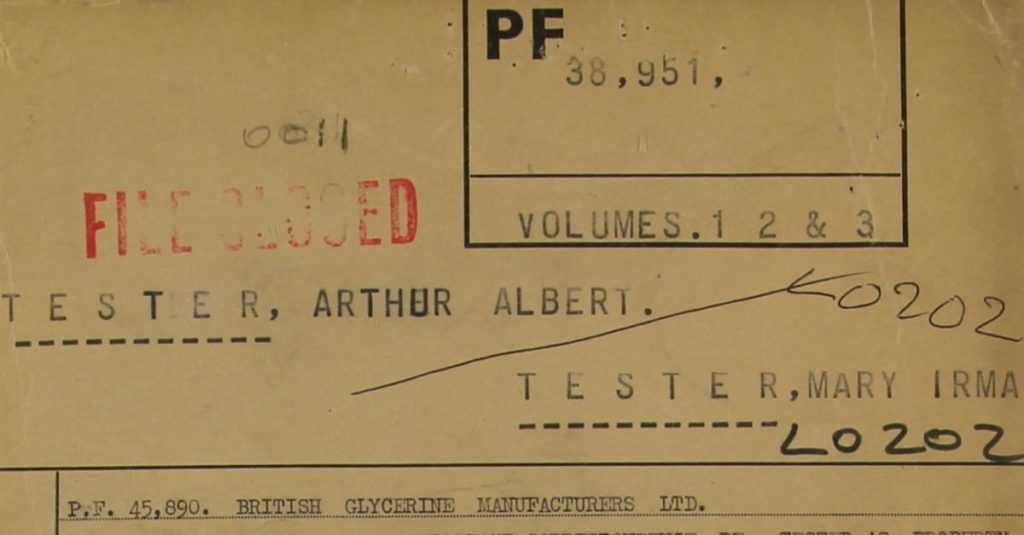A year and a half ago, I did a series on Josef Jakobs and his involvement in a black market passport scheme in Berlin. The scheme was orchestrated by a German lawyer, Jürgen Ziebell, and involved selling fake passports to Jews desperate to escape Nazi Germany. Many of the fake passports were from Finland and supplied by Finnish bootlegger Algot Niska.
The link above provides a summary of the blackmarket passport business, but I posted a separate blog with links to all of the characters involved in the scheme.
There was one triad of individuals who were involved in securing Irish naturalisations for Ziebell: Johannes Hans Wolpe, Josef Emil Roos and Lincoln Allan Smith. While I had found quite a bit on Wolpe, I had only found brief mentions on Roos and Smith. There was one intriguing reference in an MI6 report on Roos which noted that he had been hanging out with one A.A. Tester in Greece.
I did some shallow digging on Arthur Albert Tester and discovered that the individual in question was quite a fascinating character.
Born in Stuttgart of a British father and a German mother, Tester claimed to be British-born and became a theatre singer, banker, swindler and crook who was one of the first members of the British Union of Fascists. He was a apparently a fast talker who convinced many people that he was Oswald Mosley’s aide-de-camp.
With the National Archives digitized files being free for downloading at the moment… I quickly moved to download Tester’s files and have been slowly working my way through them. I can already tell you and Tester was definitely not Jewish and his father was not an English Consul. Suffice to say, that blog is going to need some updating.
On a happier note, I am finding several references to Josef Emil Roos and look forward to providing an update on his information as well.


From Romanian site
I also found a photograph of Tester in the MI5 files, from a 1923 passport application. Tester is always described as being stout with a fleshy lower lip. I’m having rather a debate as to whether the photograph of Arthur Albert Tester on a Romanian site (see above) is actually Tester… Twenty years likely separate the two photographs… and he could have lost weight. To my inexperienced eye, the ear lobes look different and the chin appears to be broader in the 1923 photograph. Possibly differences in the eyebrows as well… On the other hand, I can also argue all those differences away as being due to the angle of the face and think that they are from the same man… Any thoughts??
Romanian 2014 Hunedorean News Site
I’m going to give Google Translate a work-out today and see what it does with the Romanian text of the Tester article… I don’t know a speck of Romanian so the below translation has many rough spots. While the author of the article provides no references, it would appear that he had access to some Romanian intelligence reports. I can say that some of the personal information in the early part of the article is inaccurate as is the date of when Tester left England. He left in December 1938, not August 1939.
Arthur Albert Tester (b. 1895- d. 1944, 1988?), Alias “The Insensitive”: The double agent from Mintia who spied on the most influential VIPs from Hunedoara
Beyond the classic war, waged in trenches with soldiers and sophisticated weapons, any resounding victory was based on information obtained by spies on a different, unconventional front, that of the “secret war.” The names of some aces of espionage are already notorious in history, such as: Colonel Redl, in Austria; Mata Hari, in France and Germany; Richard Sorge, in the Soviet Union and Japan. One of the most famous and controversial secret agents during the Second World War – Arthur Albert Tester, nicknamed “The Insensitive”, had, at one point, his residence in Hunedoara County, not far from Deva, serving both the cause of the Germans as well as the Allies. Who was Tester and what will be brought to the lands of Hunedoara? These are questions that we will try to find answers to in the following.
Youth. Award winner at the school of life
According to archival research by French historians, Arthur Albert Tester saw the light of day in Stuttgart on August 23, 1895. His father, Fred Tester, was a British Jew and served as consul of England. He studied acting, law and economics. The years of his youth reserved for him the traumatic labour of the First World War, which Tester spent in Germany, as an actor in a travelling theatre, which offered performances to the wounded in field hospitals. After the war, he married a charming German woman with whom he had four children. But their marriage lasted only six years. Due to his very good financial situation, the law entrusted the children to Tester to raise. Shortly afterwards, he remarried a Berlin ballerina.
In the service of the Fuhrer in London
In the turbulent years after the war, Tester went into business, thriving due to lack of scruples and skill. He also came into contact with the future leaders of the German National Socialist movement, which financed him to infiltrate British counterintelligence services. Thus, in 1925, he left for London, acquiring British citizenship. Even though he had opened a law firm behind this screen, “Dr. Tester” handled a series of commercial and financial speculations from the shadows. The accumulated wealth propelled him directly into the firmament of the London protipendade [???].
He knew how to weave ties among the British elite of the time, and he “borrowed” some of the important people of the time with money, thus having them at hand. As early as the 1930s, British services noted Arthur Tester’s collaboration with British fascist leader Oswald Mosley, which he financed with funds from Alfred Rosenberg. At one point, Tester was attacked by the entire English press for pro-Nazi activity and accused of receiving money from the German Ministry of Propaganda. The media crisis resonated in the British Parliament, and Scotland Yard targeted Tester without any concrete evidence. But, apparently, then the foundations were laid for the future collaboration between the skilled businessman and the Intelligence Service, which outlined his double play on the European espionage scene.
“Lucinda” broadcasts from the sea
In 1938, he bought an imposing luxury yacht – “Lucinda”, a ship with a displacement of 588 tons. On board this cruise ship, the banker Tester offered mundane receptions and parties, attended by members of the English aristocracy, politicians, diplomats from London society. On these occasions, “Lucinda” raised the anchor from the port of London, sailing off German territorial waters, where the powerful radio transmitter on board transmitted data to the German secret services.
Exit English. Relocate to Athens
On the eve of the outbreak of World War II, Arthur Tester’s pro-German reputation made it impossible for him to remain in England. One day in August 1939, the banker Tester was leaving the docks at Portsmouth with his family aboard the ship Lucinda bound for Greece. He settled in a sumptuous villa in Athens. At this new residence, he received correspondence from Albania, Bulgaria and Roumania. Every weekend, he sailed off the Mediterranean, emitting long coded messages on the air. He had frequent meetings with German, English and Belgian businessmen, engaged in the profits from trade in military effects, in the midst of the war.
He loved Elena Lupescu before Carol II
Arthur Tester’s activity in the Balkans registers a new stage, in 1940, when he leaves Greece with a British passport and comes to Roumania. He lives with his family in Bucharest in a comfortable villa. Knowing his reputation, he is constantly supervised by the Romanian counterintelligence services, especially since his son-in-law, lawyer Ghibaldan, worked for the Intelligence Service.<
Roumania was no stranger to Tester. He had been here before, in 1933, when, through the businessman Marcel Leiba, he met the daughter of some Jewish merchants, Lola Stroe Lupescu, with whom he fell in love. Apparently, Tester caused a scandal, causing Lola to divorce her husband and go to London, where Arthur Tester introduced her as Elena Lupescu, the future girlfriend of Carol II!
The first acquisitions in Deva and Mintia
Against the background of anti-Jewish legislation, Tester took full advantage. He bought majority stakes in “Filderman”, “Apretura”, “Herdan”. He also bought the Deposit and Discount Bank. He joined the German financial group sponsored by Alfred Schommer, entitled “Reich Commissioner for Oil”, seeking to take control of the English-owned oil company “Romanian Star”.
In the 1940s, Tester became the co-owner of the “Külke” Sausage Factory in Deva, the main canning supplier for the Romanian, Italian and German armies. Also in that period, he took over the concession on an old palace in Mintia, on the banks of the Mureş River.
In Bucharest, he collaborates with Major Waldemar Gregory, the main representative of “Geheimdienst”, one of the main German spy agencies. On such coordinates, he has a number of contacts with Joachim von Ribbentrop and Manfred von Killinger.
Hitler shakes hands
On June 17, 1941, Arthur Tester was summoned to Berlin, where, according to a report by the Detective Corps, “he was received in audience by the Chancellor.” From that moment, the shadowy deeds of this character on the Romanian territory had full freedom of action.
Returning to Bucharest, Tester acted insistently to cultivate the impression that he would have “express missions in favour of England!”. He quickly came to the attention of Mihai Antonescu, with whom he had repeated meetings, during which they discussed topics of major interest: the relations that leaders of Romanian political parties had in Western states through the legations of member countries in Bucharest, the evolution of war and the role within our country, the rescue of the Jews from the “final solution”, economic aspects related to the oil field, etc.
In 1941, the director of the Special Intelligence Service, Eugen Cristescu, already had clear evidence that Arthur Tester was in the discreet attention of British and American agencies. During a meeting between the two, Tester managed to gain his trust, insinuating that he was serving the interests of the Allies. In support of this statement came the relations established by the Tester with: Clark R. Percy, director of a cable factory; Arthur Patrick Forbes, British Air Attaché, and Walter Duranty, a British journalist, all three known to Intelligence Service agents.
The Hunedoara network. Deputy Bursan, source “Doctor Ecko”
He deftly used his agents, such as the people of Hunedoara: Wili Kalman – director of the Deposit and Discount Bank, the businessman and deputy Constantin Bursan – rapporteur of the army budget in Parliament, as well as Colonel Dumitrescu – prefect of Hunedoara county.
Interesting is his collaboration with the industrialist and liberal deputy from Hunedoara Constantin Bursan, who, under the code name “Doctor Ecko”, would be considered by Berlin “one of the most important agents of the Abwehr in Roumania and Southeast Europe” . Later, Constantin Bursan confessed: “I had joined the choir and I was afraid to leave. I had been told by the Tester that he was evil and vengeful. ” In the whirlwind of World War II, these two protagonists, Dr. Tester and “Doctor Ecko”, contributed to the dynamization of the course of events that questioned the destiny of Roumania, with direct implications in the approach of some political forces to get the country out of the war. , with the Allies.
Hitler’s trap. The refuge from Mintia
In February 1944, German services began to have serious suspicions about Tester’s loyalty, reporting directly to Himmler about the person he was working for the Intelligence Service. Apparently, Eugen Cristescu warned Tester that the Germans had decided to call him to Berlin, “to give an account of the connections he had.”
Under the pretext of insecurity due to the bombing of the capital, Tester retreats, with his family, near Deva, to Mintia, where he had concessioned Horvath Töldy’s palace. There was the home of his secretary and mistress, Janina Stephanska Prokopjeni, a highly trusted person to whom he had given valuable goods and important funds for safekeeping. While the “foreigner” was in Mintia, his case was handled by Commissioner Eugen Georgescu, from the General Security of the State of Deva, who became one of his friends.
“Oak, extreme urgency!”
On August 23, 1944, Tester celebrated his birthday, among the guests being Colonel Dumitrescu, the prefect of Hunedoara county. The dignitary was urgently called to the prefecture of Deva and informed with the call sign “Oak – extreme urgency!” He had, however, time to announce, in Mintia, Tester about the events taking place in Bucharest. The next day, Tester went to his secretary, to whom he asked for 90,000 lei. In the afternoon of the same day, aboard a German car and accompanied by two Abwehr soldiers, he allegedly headed for Arad, intending to leave the country.
The spy who died twice
As the subsequent reports of the army show, on the night of August 24-25, 1944, within the commune of Pecica, an incident takes place, the mystery of which does not seem to have been completely solved. A Romanian military patrol ordered those in the car to stop. Upon receiving the refusal, a fire broke out on the car. Radiograms of military counterintelligence state that “two Germans were shot. One, possibly Dr. Tester, on which were found five files with original letters, signed by Mihai Antonescu and Eugen Cristescu, 100,000 lei and jewelry “. But the documents suddenly disappeared, and the two dead, buried in the cemetery in Arad.
There was a suspicion that Tester had staged his death in 1945, the British Military Mission exhumed the body, but the identification could not be made, as no two dental plaques were found. A confidential note stated that the locals in Mintia were talking about what happened: “Everything was a hoax, and Tester is alive.” In the 1960s, French historians Jacques de Launay and Roger Gheysens turned to Interpol, hoping to clarify the issue. Here is the answer: “Tester Arthur Albert, a naturalized Englishman, allegedly dead, is on the list of arms dealers destined for a Middle Eastern country.” In time, the London Metropolitan Police recorded that “double spy Albert Arthur Tester had died in 1988”!

I had a look for the two French historians mentioned in the last paragraph: Jacques de Launay and Roger Gheysens. They published a book in 1971 entitled: Les Grands Espions de notre temps – The Big Spies of Our Times. The book apparently covers such individuals as: Ignace Trebitsch-Lincoln, Georg Elser, Richard Sorge, Arthur Tester, Paul Thümmel, Istvan Ujszassy, Hildegard Beetz and Harold Philby. It’s really hard to give any credence to a book researched in the 1960s and written in the early 1970s when many of the intelligence files were still closed. Other books written by English authors around the same time are based mostly on hearsay and rumours.
Sooo… we’ll see what the MI5 files have to say.
Tester’s story is a bit of a side-shoot to a side-shoot to the Josef story but, as I sift through Tester’s file looking for information on Josef Emil Roos, I find myself captivated by this mysterious story. So there will likely be some Tester blog posts in the future!
N.B. 2020 06 30 – I have published a four-part series on Tester: Part 1 is here, Part 2 is here, Part 3 is here, Part 4 is here
A follow-up post on Josef Emil Roos is here.
